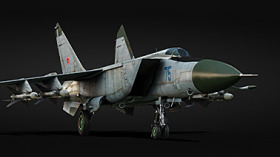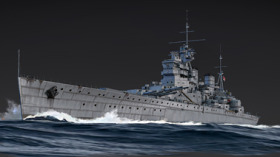
- For PC
- For MAC
- For Linux
- OS: Windows 10 (64 bit)
- Processor: Dual-Core 2.2 GHz
- Memory: 4GB
- Video Card: DirectX 11 level video card: AMD Radeon 77XX / NVIDIA GeForce GTX 660. The minimum supported resolution for the game is 720p.
- Network: Broadband Internet connection
- Hard Drive: 23.1 GB (Minimal client)
- OS: Windows 10/11 (64 bit)
- Processor: Intel Core i5 or Ryzen 5 3600 and better
- Memory: 16 GB and more
- Video Card: DirectX 11 level video card or higher and drivers: Nvidia GeForce 1060 and higher, Radeon RX 570 and higher
- Network: Broadband Internet connection
- Hard Drive: 75.9 GB (Full client)
- OS: Mac OS Big Sur 11.0 or newer
- Processor: Core i5, minimum 2.2GHz (Intel Xeon is not supported)
- Memory: 6 GB
- Video Card: Intel Iris Pro 5200 (Mac), or analog from AMD/Nvidia for Mac. Minimum supported resolution for the game is 720p with Metal support.
- Network: Broadband Internet connection
- Hard Drive: 22.1 GB (Minimal client)
- OS: Mac OS Big Sur 11.0 or newer
- Processor: Core i7 (Intel Xeon is not supported)
- Memory: 8 GB
- Video Card: Radeon Vega II or higher with Metal support.
- Network: Broadband Internet connection
- Hard Drive: 62.2 GB (Full client)
- OS: Most modern 64bit Linux distributions
- Processor: Dual-Core 2.4 GHz
- Memory: 4 GB
- Video Card: NVIDIA 660 with latest proprietary drivers (not older than 6 months) / similar AMD with latest proprietary drivers (not older than 6 months; the minimum supported resolution for the game is 720p) with Vulkan support.
- Network: Broadband Internet connection
- Hard Drive: 22.1 GB (Minimal client)
- OS: Ubuntu 20.04 64bit
- Processor: Intel Core i7
- Memory: 16 GB
- Video Card: NVIDIA 1060 with latest proprietary drivers (not older than 6 months) / similar AMD (Radeon RX 570) with latest proprietary drivers (not older than 6 months) with Vulkan support.
- Network: Broadband Internet connection
- Hard Drive: 62.2 GB (Full client)
The Ultimate bomber just got an upgrade! Today, we’ll be covering not one, but two new variants of the mighty F-111 Aardvark, including one from down under! Let's take a closer look at what the C and F versions have to offer.
F-111C & F-111F: Strike Aircraft for Great Britain and the USA at Rank VII
At a glance:
- Modernized upgrades to the Aardvark!
- Guided air-to-ground ordnance.
- All-aspect IR missiles.
- Increased countermeasure capability.
- More powerful engines (F-111F).
▼
F-111C
In the 1960s, the Royal Australian Air Force sought to replace their Canberra bombers due to their capability limits and lack of all weather operation capability. Lacking a capable bomber that could match the Tu-16, the RAAF began searching for a new type that could satisfy its longer range requirements. Assessments were made of several current and up and coming aircraft, such the A-5, F-4 Phantom II, Mirage IV, TSR.2 and the then TFX program. Political and economical issues steered the RAAF away from the TSR.2, with the economic cost of the Mirage IV also being a deciding factor. The final winner was the TFX program which offered to meet all the needs and requirements set out.
When the F-111 finally emerged from the TFX program, it became clear that the RAAF would require its own modifications to be made to what was to be the B (Naval) variant for it to be accepted. A longer wing design was incorporated, a unique intake redesign, along with some additional changes to radio equipment and undercarriage improvements were all introduced to the aircraft. Now designated F-111C, the aircraft was officially delivered in 1968, but due to delays, training and initial teething issues, it was not officially introduced into full service until 1973. Initially a batch of 24 were produced for Australia, with a further 4 converted from American F-111s to F-111C standard. 4 aircraft in total were also converted to RF-111C reconnaissance aircraft.
The F-111C provided the RAAF with the capacity to reach Jakarta in Indonesia, something the Canberra and other types previously in service could never achieve. While never seeing direct combat with the RAAF, they came very close in 1991 when they were moved to standby ready for replacing the F-18s operating in the Gulf War should they need to be rotated out. However, the war would end before that was necessary. They would be put on standby for possible operations in East Timor with the UN INTERFET force that Australia led during the independence of Timor-Leste from Indonesia. The aircraft served more than 40 years at the hands of the Royal Australian Air Force, and finally retired in service in 2010.
F-111F
The F-111F was a modernized variant of the earlier Aardvarks, featuring more powerful TF30-P-100 engines and much higher thrust output over the F-111A. Operated by the USAF, the F-111F Pacer Strike was the final fighter variant of the aircraft produced. As well as the previously mentioned engine improvements, the aircraft was fitted with the AN/AVQ-26 Pave Tack FLIR target designator, allowing the use of guided munitions like the Paveway among other modernizations to its loadouts and systems.
This variant would serve heavily in the 1991 Gulf War, dropping more laser guided bombs than any other type of aircraft. The type would successfully fly a high percentage of combat missions, striking their targets and destroying them with a high level of precision, more so than most other allied coalition aircraft taking part. The F-111F is credited with destroying over 1000+ tanks and armored vehicles during the conflict. 1996 would mark the final retirement of the F variant in USAF service.
Meet the F-111C and F!
The next major update will include two new installments of the famous F-111 series, the domestic F-111C variant of the Royal Australian Air Force for the British tree and the final “fighter” variant of the American variants, the F-111F. Both of these variants take what the F-111A already does well and improve upon it in almost every area. Let’s check out what you can expect from them when they arrive to War Thunder in the Dance of Dragons major update!
Firstly, let’s take a look at the unique Australian variant, the F-111C. This version features a longer modified wing aimed at improving longer distance flights and reinforced landing gear. Along with this, you’ll get a huge boost to your defensive countermeasures, with the total for this variant being 240 flares / chaff, which is a massive increase over the base F-111A that will be plenty to help you out in battle. If that alone wasn’t enough to keep your enemies busy, they’ll need to keep an eye out on what you are firing back at them too! The F-111C features AIM-9L all-aspect Sidewinder missiles, far more potent than the B variants found on the earlier variant already in game.
Did you know? The F-111C in Australian service was affectionately known as “The Pig” despite the crews and engineers loving the aircraft.
Next up, we have the F-111F for the USA. This takes the base F-111A and provides a pair of improved TF30-P-100 engines that have a higher thrust output, meaning a more powerful all round performer. But the improvements don’t stop there! While the F-111A was limited to the AGM-12B Bullpup, the F variant introduces AGM-65 capabilities to the aircraft in B, D and G models. This adds some fire and forget capacity to the aircraft that will aid you in combined battles for sure. On the offensive in the air, the F-111F can rely on AIM-9L for missile combat.
Both the C and the F variants come with the AN/AVQ-26 Pave Tack targeting pod, which opens up the option of using guided bombs for the first time on the F-111. You can find GBU-10, 12 and 24 on both aircraft and the IR guided GBU-15 also on the F-111F. Both variants also feature an array of Mk 82 and Mk 84 bombs for conventional bombing and taking out bases.
Interesting: One of our long-time War Thunder Moderators on the community team, KnightoftheAbyss, worked on RAAF F-111Cs for over 12 years. We would like to thank him for his notes towards the historical section of this blog and recognize his service with the RAAF.
These advanced Aardvarks will be taking to the skies very shortly and will once again take the crowns (for now at least!) as the “ultimate” bombers in War Thunder, with some even fancier toys this time around. We hope you’ll enjoy these new aircraft, be sure to let us know! You won’t have too much longer to wait until you can take to the skies with them. Until then, stay tuned to the news for more information on what else you can see in the Dance of Dragons major update.
Please note that these vehicles’ characteristics may be changed before they are added to the game.










Comments (73)
Comments will be premoderatedSo now we have F111A, F111C, F111F and SU24M. Is there chances we'll see Mirage IVA/P someday? France deserves its Rank 7 supersonic bomber too.
Kishin_SR6, i was kind of hoping for an armed version of the g to keep the swing wings train chugging but the IV would be nice too
Kishin_SR6, bro france already have got many planes, let other nations like germany get something lol also that mirage is great, but first let other nations get something too lol
Why is this being added to the UK, but the Abrams AIM went to the US?
KhorneFlakez1337, Well...fair point.
KhorneFlakez1337, The US is getting the F model which is the most recent varient of it. Ausi Abrams went to the US due to it being an Abrams platform. Wouldn't make much sense for the C model to also go to the US.
As a bomber player, i'm very happy to see these variants coming to the game. Hope to see even more jet/prop bombers in the future!
Bstgunner, I'd like to see them fix bombers... Bring back the old dmg model, buff gunners while in formation, add more bomb targets per match, and spread out bomb targets that aren't marked on the enemy's map (show potential bomb targets for the enemy)
Bstgunner, But they put them in as strike planes to bad it would be nice to get high BR bombers though
So GB can get this, A US made jet. But it could not get the Aussie Abrams?
Wolf_89, The Aussie Abrams is just a US Abrams operated by Australia. So really it has no connection to the UK. The F-111C is a domestic variant for Australia never operated by the US. There was also a desire to see an F-111 for the UK, as had their own F-111 variant, but sadly it was a cancelled project that never flew. So the C is a good solution here.
New Minecraft update looks interesting, wait why are there no blocks?
VARK VARK VARK VARK VARK VARK VARK
Yes finally more Australian airforce and one of my favourites “the pig”
Barik_01@psn, Hopefully we get Aussie Mirage, Sabre and more soon too!
F-111C being added could be one of the greatest moments in War Thunder history.
B-52 when?
Finally Gaijin has also engraved in stone a clarification of a common misconception: the F-111F was the best CAS plane of the entire First Gulf War,beating both the F-15E and the A-10A by a wide margin. We'll finally have the true First Gulf War ground pounder in rhe game ❤️🩹
Submit a complaint